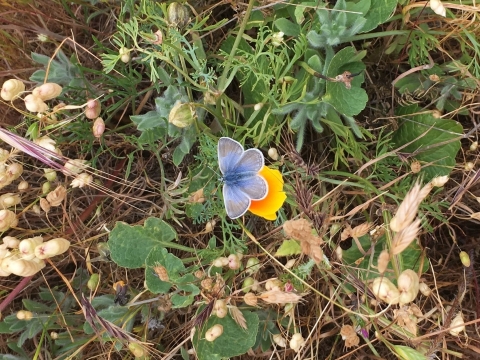About Us
The U.S. Fish and Wildlife Service works with others to conserve, protect, and enhance fish, wildlife, plants, and their habitats for the continuing benefit of the American people.
The Service's Sacramento Fish and Wildlife office focuses on plant and wildlife conservation in 38 counties across the state of California. Stretching the length of the Central and San Joaquin Valleys, and from the Sonoma and Central Coasts to the Sierra Nevada, our jurisdiction covers more than 57,700 square miles. From tiny fairy shrimp living in vernal pools to furry foxes living in the desert, our office monitors the status of more than 100 listed species.
Species living in California face many complex conservation issues. That’s why we put collaboration at the forefront of our strategy to find balance between the needs of people and wildlife. Our staff uses the best available science and meets with a variety of partners, including landowners, Tribes, government agencies and community groups, to ensure all voices are included in our decision-making process. By working together, we can find solutions that support land use needs and important habitat and species conservation.
What We Do
The Endangered Species Act (ESA) provides a critical safety net for America’s at-risk native fish, wildlife and plants. The Sacramento Fish and Wildlife Office was established to implement that safety net throughout much of California. With species conservation as our ultimate goal, we work with a wide variety of partners to guide research, develop conservation actions, restore habitat and recover species. We use the best available science in our decision making, foster relationships that result in tangible conservation outcomes and develop a workforce of conservation leaders.
Our office works on a variety of projects in partnership with federal and state agencies, Tribes, local governments and private landowners. Together, our work results in conservation gains that support the recovery of listed and at-risk species.
Conservation and Management:
The Sacramento Fish and Wildlife Office:
- Develops listing decisions, recovery plans and critical habitat
- Supports partners with implementing recovery actions
- Reviews applications for scientific research permits
Services:
The Sacramento Fish and Wildlife Office:
- Provides Section 7 consultations to federal agencies
- Supports the development and permitting of habitat conservation plans
- Coordinates with military partners under Fish and Wildlife Coordination Act and Sikes Act
- Assists with the development of conservation banks
- Responds to oil spills and performs work under the Natural Resource Damage Assessment process
Our Organization
Our Species
The Sacramento Fish and Wildlife Office monitors the status of more than 100 listed species, including furry mammals like the southern Sierra Nevada fisher, water-loving amphibians like the California red-legged frog, slithering reptiles like the giant garter snake, graceful insects like the Mission blue butterfly and colorful plants like Bakersfield cactus. A full list of the species we monitor can be found on our Species page.
Get Involved
As an office with a large work area, we maximize efforts to collect data on listed and at-risk species by funding research and coordinating on-the-ground conservation efforts with partners. These partners and efforts are critical extensions of our monitoring and field work, and the information collected is essential for our decision-making processes.
Location and Contact Information
- Sacramento Fish and Wildlife OfficeView DetailsFederal Building 2800 Cottage Way, Room W-2605 Sacramento, CA 95825-1846



































